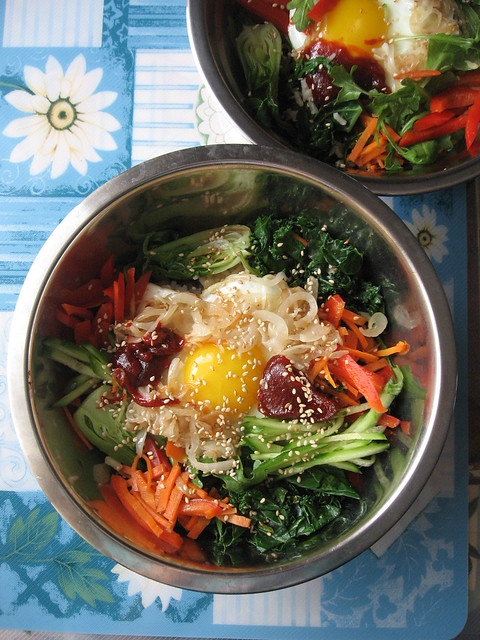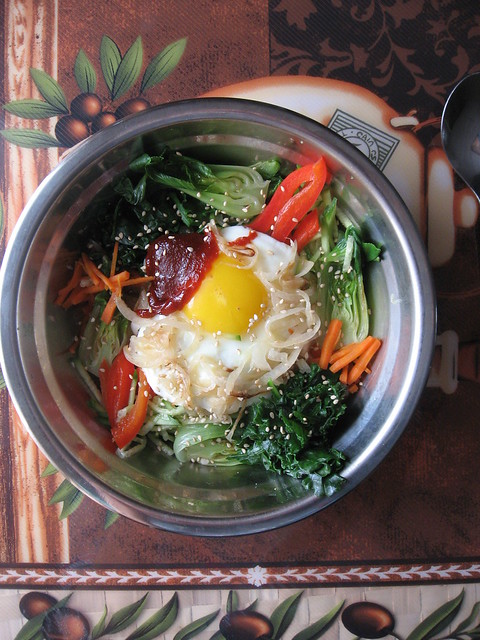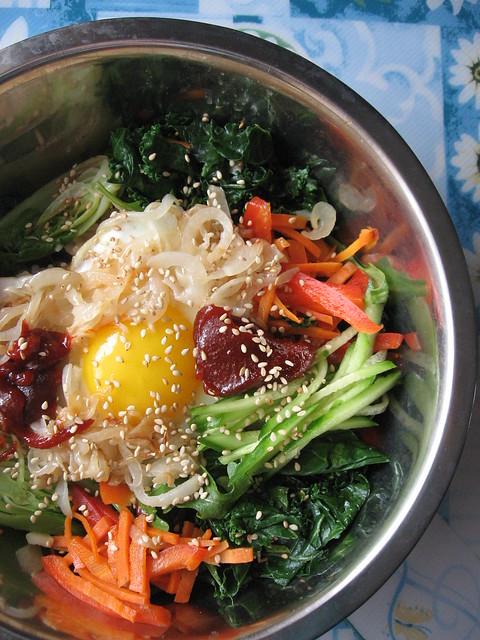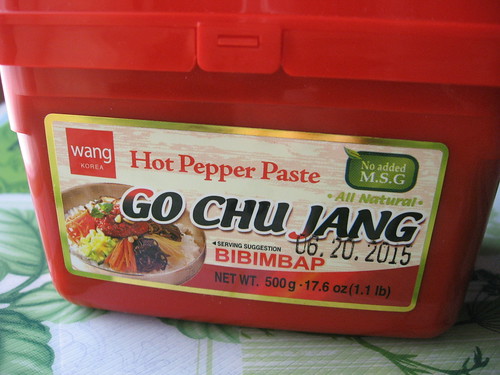Easy Healthy Korean Bibimbap 韩式拌饭
I found you at last! Without much procrastination, I have to "own" you especially when I do not go to the Korean grocery store that often. A few days after, you are already put to good use.
I have thought about making bibimbap at home for some time. Something is just lacking and you are critical.

The Korean national dish - bibimbap, can be considered very nutritious, healthy and wholesome. Traditional bibimbap hails five colors - green 青, red 赤, yellow 黄, white 白, black 黑 (of vegetables) closely associated to the body's Yin-Yang five-elements balance. Five elements' Wu-Xing 五行: Wood 木, fire 火, earth 土, metal 金, and water 水 associated with five-systems' Zang-Fu 五脏: Liver 肝, Heart 心, Spleen 脾, Lungs 肺, Kidney 肾).
In line with tradition, modern-day eating also calls for a variety of colorful fresh vegetables (rainbow diet), and bibimbap precisely hits the spot.

Similar to making sushi at home, the good thing about making bibimbap at home is to be able to put your own creative varied spin on it. Today I have deviated from tradition a little by NOT using spinach. But with tradition, I have tried to get in as many colors as possible, and using a variety of vegetables. Another bonus of making bibimbap at home is - it actually allows you to use up your "odd-quantity" leftover produce (not recommended but if you want, you can).
So what's in my bibimbap?

Kale - Bok Choy - Carrots - Red Bell Pepper - Cucumber - Onions. Egg is optional if you are strictly vegetarian but I added it to make this ovo-vegetarian rice bowl complete and balanced of grains, protein and vegetables.
Bibimbap without gochujang? It is like macaroni and cheese without the cheese? I did not forget the essential "you", did I? Finally, I found a reasonably good-quality gochujang (without MSG) with acceptable sodium level (1tbsp ~380 mg sodium) for one serving of bibimbap (see below). You can always make your own gochujang, but for me, not today.
The most time-consuming part of making bibimbap is the preparation - slicing and slicing (julienne, julienne, julienne!) the vegetables.

Easy Healthy Bibimbap (serves ~1-2, double or adjust quantity for more servings)
Ingredients:
1/2 yellow onion, thinly sliced
1 tbsp finely minced garlic
2 handfuls of organic green kale leaves, finely chopped
3 baby Bok Choy
1/4 medium-size organic carrot, thinly sliced to match-sticks
1/4 medium-size organic red bell pepper, thinly sliced to match-sticks
1/2 small Persian cucumber, thinly sliced to match-sticks
1 organic egg, prepare sunnyside up with yolk still runny (preferred)
1 serving of cooked rice
1 tbsp of gochujang
Roasted white sesame seeds to garnish
Directions: Heat 1 tbsp of oil and saute the onion till translucent and soft. Dish out. Heat 1tsp of oil and saute 1/2 tbsp garlic with kale, dish out; then saute remaining 1/2 tbsp of garlic with Bok Choy, dish out. Heat 1tsp oil and fry the carrots till tender and cooked. Dish out. Start assembling the ingredients on the cooked rice (Note: The kale, Bok Choy, carrots and onions were lightly sauteed; by the time the dish is served, all the vegetables were at room temperature); then top with fried egg, and gochujang then garnish/sprinkle generously with roasted sesame seeds.
Sharing with Hearth and Soul
Tag: bibimbap, stonepot rice
An Escape to Food on Facebook



Post a Comment